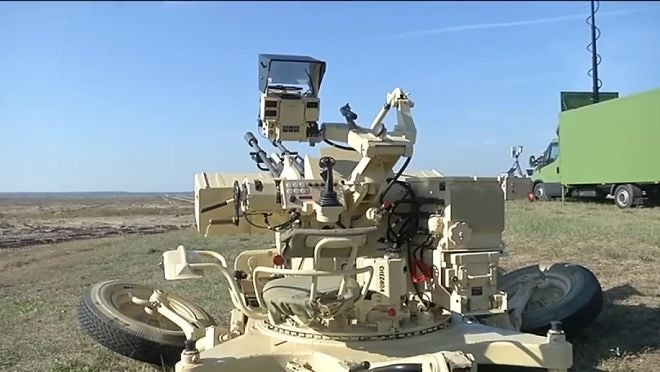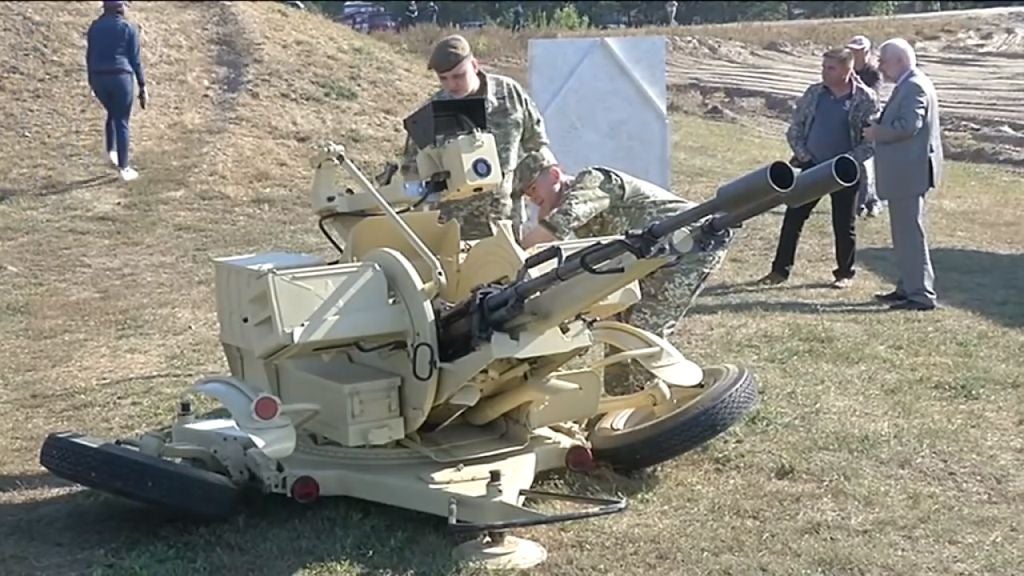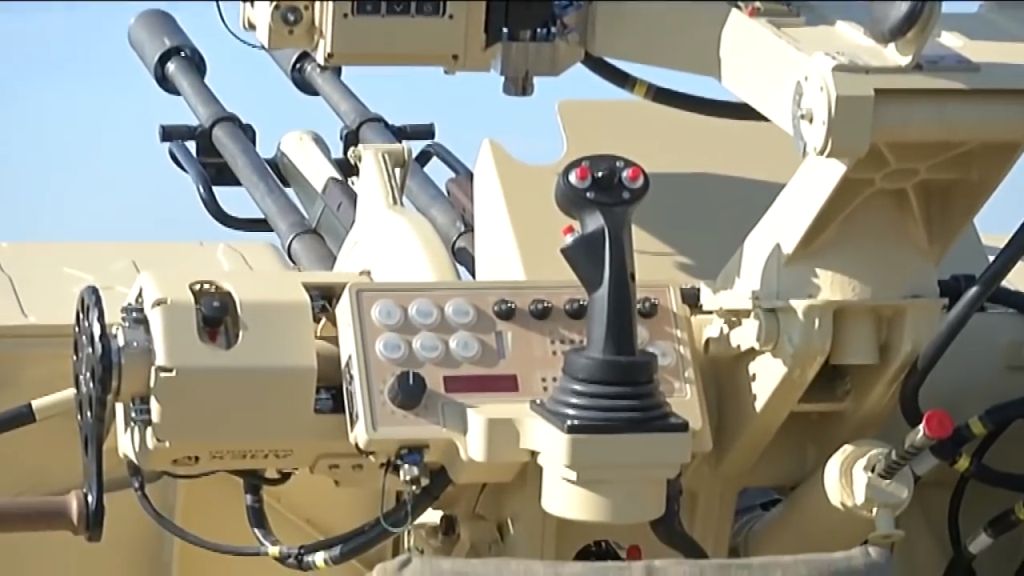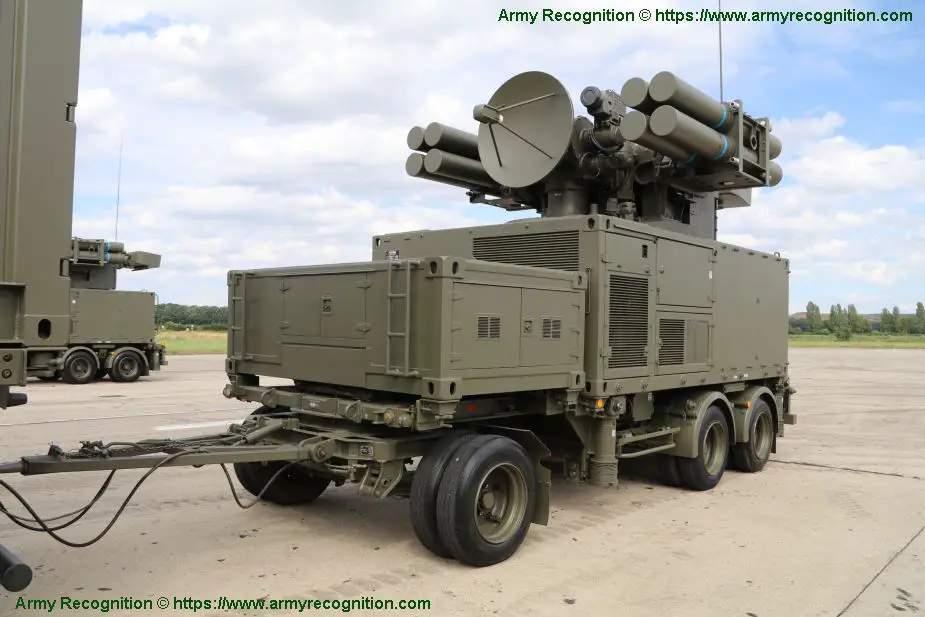Kuinkakohan monta Marksmania meillä on? Pelkään, että liian vähän suojaamaan kaikkia niitä joukkoja joita pitäisi pystyä suojaamaan.
Olikos niitä 10 vai 12?
Follow along with the video below to see how to install our site as a web app on your home screen.
Note: This feature may not be available in some browsers.
Kuinkakohan monta Marksmania meillä on? Pelkään, että liian vähän suojaamaan kaikkia niitä joukkoja joita pitäisi pystyä suojaamaan.
Olikos niitä 10 vai 12?
Wikipedian mukaan 7...
En ole varma mutta epäilen, että meidän Marksmaneja ei ole päivitetty käyttämään älyammuksia joka tarkoittaa sitä, että se dronen alas ampuminen on hitusen vaikeampaa.Kuinkakohan monta Marksmania meillä on? Pelkään, että liian vähän suojaamaan kaikkia niitä joukkoja joita pitäisi pystyä suojaamaan.
Aika pieni kupu tulee. Ammusilmatorjuntaa täytyisi olla moninkertainen määrä nykyiseen nähden jos aiotaan esim. joukkoja suojata. Enkä puhu nyt sergeistä vaan ammusilmatorjunnasta joka pystyy käyttämään älykkäitä ammuksia.Joka tapauksessa puhutaan Etelä-Suomen ylläpuolelle levittyvästä teräskuvusta.
Linkin Raytheon Coyotella tuota testataan jo nyt, samalla lailla voi käyttää eri hakeutumisjärjestelmiä kuin ohjuksillakin, joita on jo kuitenkin käytetty ilmatorjunnassa jo 64 vuotta (no, 59 jos ensimmäinen tiputus taistelutilanteessa otetaan lukuun). Hakeutumista edistää kehittynyt tietotekniikkaa - käytännössä jokaisesta lämpökamerasta saa IIR-hakupään kuvantunnistusohjelmiston avulla.
Etuna on kyky pysyä ilmassa pitkään ja halvempi hinta kun mm. suurta kiihtyvyyttä ja rakettimoottorin kustannuksia ei tule mukaan. Lennokki voi myös laskeutua takaisin, jos torjuntaa ei tulekaan.
Toki mieleen tulee, että tuollaista lennokkia voi käyttää muutenkin ilmatorjunnan osana, ei korvaamaan muita aseita vaan täydentämään. Eli lennokki asettuu törmäyskurssille vaikka risteilyohjukseen tai matalalla lentävään lentokoneeseen nähden. Pientä lennokkia ilman vanaa on eittämättä mahdoton havaita. Lennokin voi laittaa ilmaan jo ennakkovaroituksesta, toisin kuin ohjuksen.
Tekniset haasteet ovat toki mittavat, mutta niitä voi vähentää vaikkapa laittamalla jonkinlaisen dyneema-nuotan lennokin vedettäväksi. Dyneema-nuottaa voisi käyttää myös dronejen torjuntaan ilman että tarvetta käyttää itse lennokkia torjuntaa joka kertaan syntyisi.
http://www.thedrive.com/the-war-zon...-break-up-hostile-swarms-and-potentially-more


Ukrainian Remote-Controlled ZU-23 Autocannon
Posted 1 min ago in Daily News, Defense, News by Hrachya H with No Comments
Tags: remote controlled, Turchynov, ukraine, ZU-23

On September 21, Oleksandr Turchynov, the Secretary of the National Security and Defence Council of Ukraine, took part in an event where the latest developments of the Ukrainian defense industry were demonstrated. Among a variety of new and upgraded weapon systems and vehicles (helicopters, armored vehicles, UAVs etc.), they also revealed a remote-controlled conversion of the ZU-23 autocannon.

ZU-23 is a twin-barrelled 23mm autocannon initially developed for anti-aircraft use. More than half a century after its development, this autocannon is still in service in the armed forces of post-Soviet and many other countries. Although it is not too useful against modern military jets, it can be very successfully used against UAVs. Also, this autocannon is widely used in the Ukrainian and Middle Eastern conflicts as an anti-materiel and anti-personnel weapon system. With an extremely high rate of fire (2,000 rpm) and quite a potent cartridge, it is a devastating tool for the mentioned applications.

By designing the remote control conversion of the ZU-23 autocannon, Ukrainian arms designers probably try to further adapt this weapon system to the requirements of the modern warfare. According to the Ukrainian officials who demonstrate this weapon in the video embedded below, a single operator can control up to six remote-controlled ZU-23 autocannons. Apparently, the manual operation is still retained and upgraded, too.
Another tendency observed in the current wars is the almost exclusive use of the ZU-23 autocannon in a mounted configuration. If you watch combat footage from the Ukrainian or Syrian conflicts, you’ll see that these autocannons are mostly mounted on pickup trucks, BMP and MTLB chassis etc. Mobile ZU-23 autocannons are even more effective anti-materiel and anti-personnel weapons. So the mobility became pretty much a must-have feature for this weapon in the modern combat. That being said, I think this new remote-controlled version of the ZU-23 autocannon could possibly be even more effective if mounted onto an unmanned ground vehicle.
Patria on noita modernisoinut myös.Ei Sergeitä pataan vaan modataan ne
https://www.thefirearmblog.com/blog/2018/10/02/ukrainian-remote-controlled-zu-23-autocannon/
En ole varma mutta epäilen, että meidän Marksmaneja ei ole päivitetty käyttämään älyammuksia joka tarkoittaa sitä, että se dronen alas ampuminen on hitusen vaikeampaa.
Aika pieni kupu tulee. Ammusilmatorjuntaa täytyisi olla moninkertainen määrä nykyiseen nähden jos aiotaan esim. joukkoja suojata. Enkä puhu nyt sergeistä vaan ammusilmatorjunnasta joka pystyy käyttämään älykkäitä ammuksia.
23 ItK 95 on jo tehty. Miksei ehken lisääkin, jos rahaa löytyy.
Monien komponenttien saatavuus taitaa olla aika heikko? Joskus kuulin myös tulenavausnopeuden kärsineen päivityksen myötä.
Veikkaanpa, ettei Sergeiden lisämodifikaatioita nähdä enää. Torjuntatilavuus ja ampumatarvikkeen yksipuolisuus suhteessa resurssisyöppöyteen (viestikalusto, ajoneuvot, miehistö jne.) ei oikeuttane kaluston käyttöiän pidentämistä.
Jos halvalla saisi, niin..
Jos yli kaksi miljoonaa markkaa pitää paikkansa, niin kallis modifikaatio, mielestäni. Toki esim. lämpökameroiden hinnat ovat pudonneet huimasti muutamassa vuosikymmenessä.
https://maanpuolustus.net/threads/20mm-vulcan-kierrätys.5585/post-445637
https://maanpuolustus.net/threads/ilmatorjunta.523/post-96921
Myös puolalaiset ovat kehittäneet vastaavan.Ei Sergeitä pataan vaan modataan ne
https://www.thefirearmblog.com/blog/2018/10/02/ukrainian-remote-controlled-zu-23-autocannon/
How has Thales’ Crotale air defence missile system maintained its invincible reputation even after thirty years of ever-changing incoming threats? The question is even more pertinent today coming just after France and Finland issued a joint declaration calling for a common European strategy on defence cooperation.

Thales Crotale NG (Picture source: Army Recognition)
“Crotale was the first land air defence missile system designed with both radar and infrared sensors to provide the best view of the situation– and it still is,” says Pascal L’ebrellec, Air Defence Sales Manager at Thales. “It’s also a very stable, reliable, compact multi-sensor system with everything integrated on one vehicle from detection to interception, in order to respond to threats from planes, helicopters, or drones.”
This “all in one” missile launcher was designed to protect and reassure Finland against the rumblings of the neighbouring Soviet Union. Throughout the decades, Thales has continually upgraded the Crotale with new features including improved connectivity and electronics.
In its most recent upgrade, the Crotale NG (New Generation), features a state-of-the-art thermal camera that provides the Finnish Defence Forces with a dependable real-time image in daylight or at night. The system is effective helicopters, drones, and rockets, and it can protect fixed or moving civil or military sites. The Crotale NG can fire 13-kilogram warheads at Mach 3.5 speed at ranges of at least 11 kilometres.
This capacity to make fine distinctions is an example of how Thales has been keeping Crotale up with the times. “The trend in the military is to use more and more small drones with electronic equipment. We’re coming back to the Cold War world where the targets were small cruise missiles.” This has fueled strong demand for anti-drone systems around the world”, L’ebrellec says. The Crotale NG has demonstrated that technical decisions made over 30 years ago are still very relevant and make it capable of engaging the targets of today, which weren’t even envisaged when it was designed.
Crotale NG entered production in 1990. Following Finland and France, it quickly received a vote of confidence when other countries including Greece, Oman, and South Korea adopted the system.
